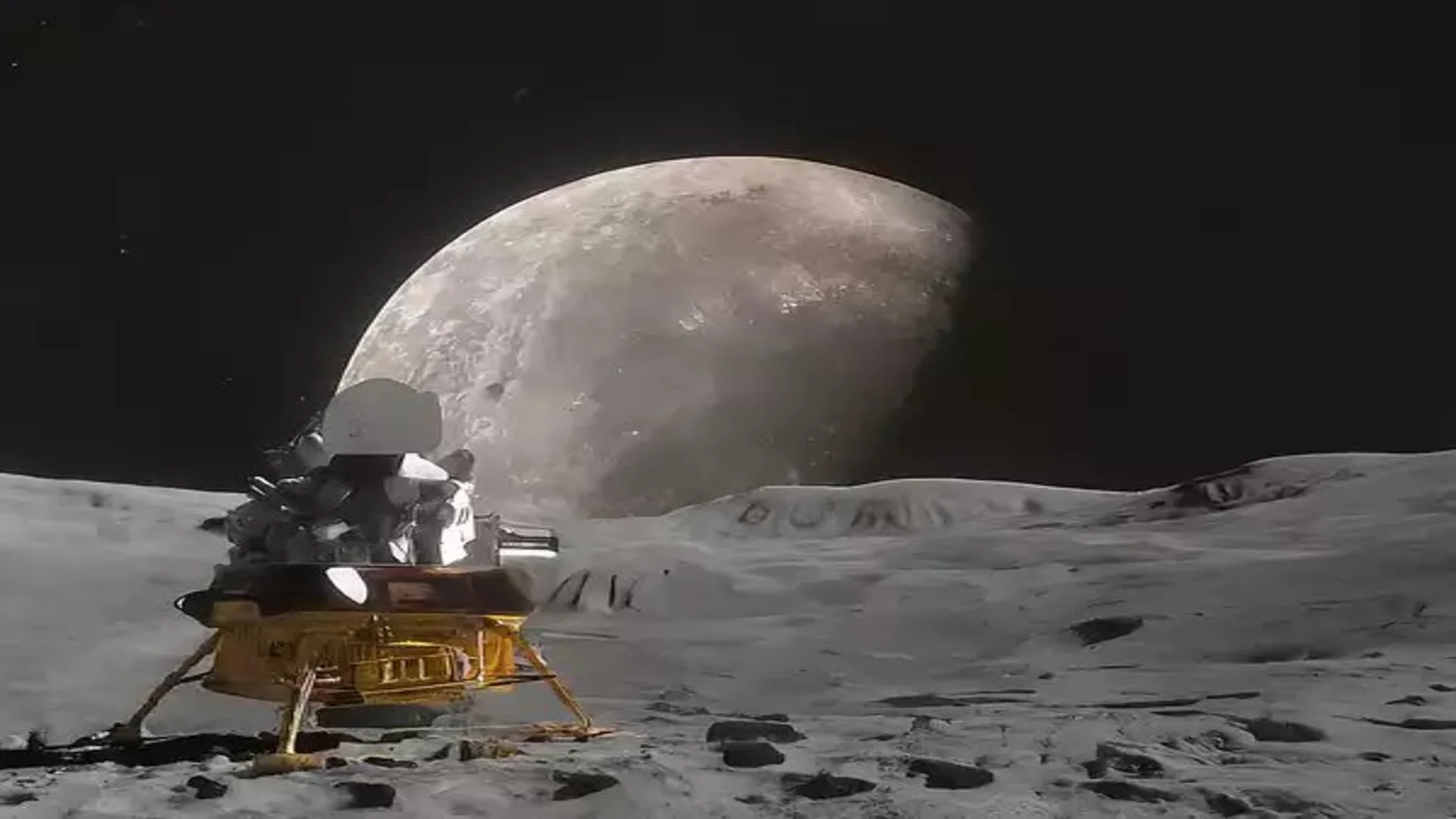India’s Chandrayaan-3 mission has etched its place in space exploration history by landing on the Moon’s South Pole, specifically in a crater that dates back an astounding 3.85 billion years. This ancient lunar site has offered scientists a rare window into the early geological history of the Moon. The crater, believed to be from the Nectarian period, is one of the oldest on the Moon’s surface and provides insights that no other mission has yet uncovered.
Chandrayaan-3’s success is particularly significant because of its unique landing site. This crater, measuring approximately 160 kilometers in diameter, has been partially buried by ejecta—material thrown up by other lunar impacts, particularly from the South Pole-Aitken basin, the Moon’s largest known impact structure. This has led to a fascinating geological mixture at the landing site, allowing scientists to study materials from both the crater itself and the ejecta from other impacts.
The rover, Pragyan, deployed by Chandrayaan-3, has been sending back images that are the first ever taken from this latitude on the Moon. These images are groundbreaking, revealing details about how lunar surface materials have been displaced and scattered across different regions of the Moon over billions of years. Researchers from the Indian Space Research Organisation (ISRO) and the Physical Research Laboratory in Ahmedabad have been analyzing these images, noting that the mission is helping to piece together how the Moon evolved during its early history.
What makes this crater so important is its age. Formed during the Nectarian period, around 3.85 billion years ago, this time period was marked by frequent and intense asteroid impacts on the Moon’s surface. Studying craters from this era provides valuable clues about not only the Moon’s past but also the history of our solar system. By examining the materials in this ancient crater, scientists are gaining insights into the processes that shaped the early Moon, which could have implications for understanding planetary formation in general.
Another exciting aspect of Chandrayaan-3’s mission is its landing near the Moon’s South Pole, a region of significant scientific interest. Unlike the more explored equatorial regions of the Moon, the South Pole is thought to contain water ice in its permanently shadowed craters. While Chandrayaan-3’s primary mission does not involve studying water, its presence in this region brings future lunar missions one step closer to investigating this vital resource, which could be crucial for future manned lunar exploration.
Also read: West Bengal Doctors Brace for Crisis as Threats Escalate, Strike Looms
The landing site was named “Shiv Shakti Point” by the Indian government in honor of the achievement, and it symbolizes India’s growing capabilities in space exploration. This mission not only adds to India’s space achievements but also pushes the boundaries of lunar science, providing a deeper understanding of our celestial neighbor’s early history.
Chandrayaan-3’s successful landing on such a geologically significant site has set the stage for future discoveries about the Moon’s past and its potential for supporting future exploration.























